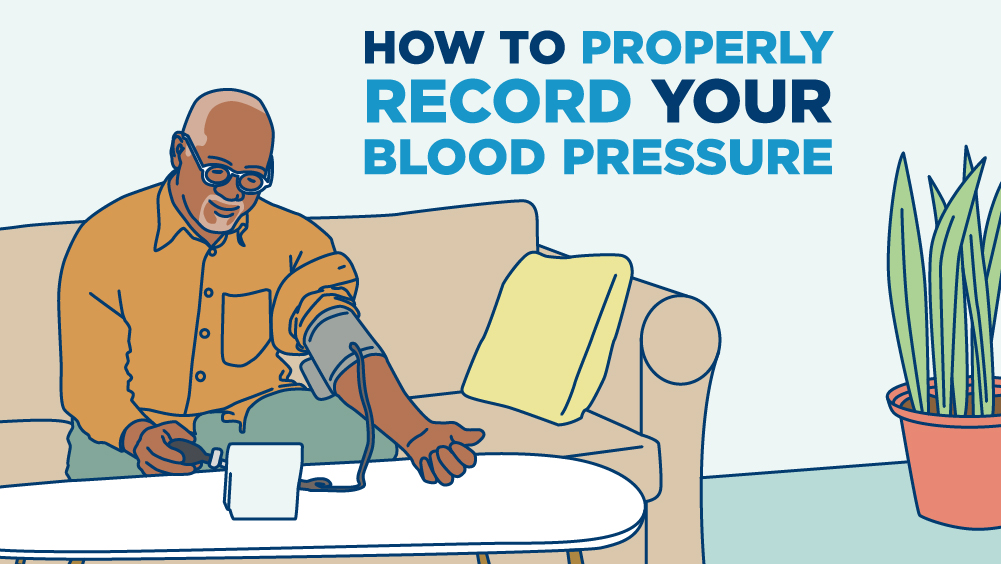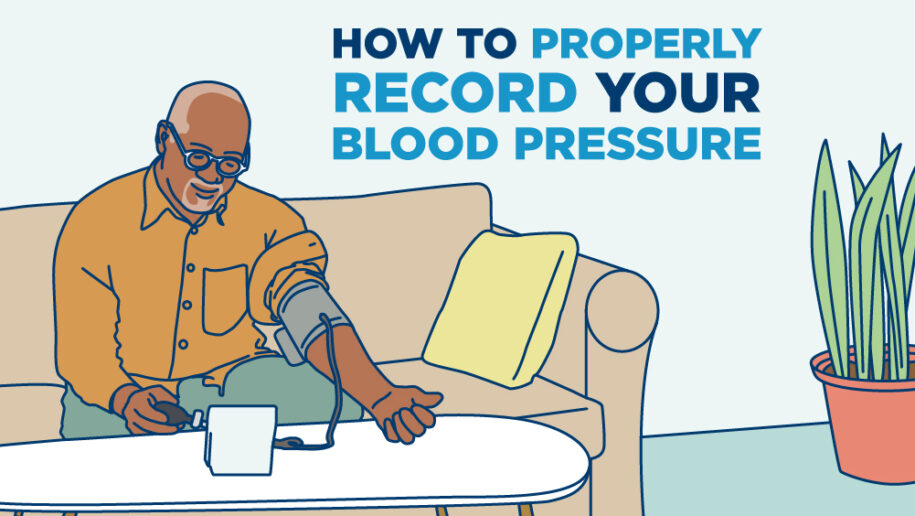
How to Properly Record Your Blood Pressure
Blood pressure represents the amount of force your heart needs to exert to pump blood through your arteries. It’s measured by gauging the pressure of the blood pushing against your arterial walls. The higher the pressure, the more strain is placed on the heart, which increases the risk of other cardiac problems like heart disease, heart attack and stroke [1].
To support long-term heart health, patients should seek to keep their blood pressure within a healthy range of the expected 120/80 mmHg.
But how do you monitor and measure your blood pressure outside of a healthcare setting?
This is what an RPM blood pressure cuff was designed to do.
When and How Should You Record Blood Pressure?
If you’re taking medicine for an existing health concern or condition, relying solely on healthcare professionals to measure your blood pressure may not be sufficient. Too much time can elapse between visits, which could result in significant swings or spikes in your blood pressure going unnoticed and untreated.
Patients enrolled in Signallamp’s RPM program to monitor their blood pressure receive an education card with their blood pressure cuff, ensuring frequently asked questions can be answered almost immediately.
When Should You Record Your Blood Pressure?
The answer to this depends on your health and typical blood pressure levels. A patient with higher blood pressure will likely need to perform this process more frequently than someone with low levels.
Are you on blood pressure medicine?
If so, the optimal time to perform a reading is 60-90 minutes after taking your medication. And, for the sake of consistency, you should perform this routine around the same time every day.
How Do You Measure Blood Pressure Using a Cuff?
For the most accurate reading possible, follow these tips:
- Ensure that the cuff is the proper size for your arm
- Empty your bladder beforehand
- Follow the manufacturer’s instructions
- Place the cuff above the bend of the elbow, directly on your skin
- Put both feet flat on the ground, with your legs uncrossed
- Rest calmly in a comfortable chair with your arm resting on a flat surface at heart level
- Do not talk while measuring blood pressure
- Do not share your blood pressure cuff with others
- Do not smoke, exercise or drink caffeinated or alcoholic beverages within 30 minutes of measurement
After taking the measurement, wait for a minute, then retake the test. Then, record all the readings in a blood pressure log. Doing so will make it easier to chart your blood pressure trends.
What Does It Mean if Your Blood Pressure Is Too High or Low?
Blood pressure is measured using a two-number ratio:
- Top number (systolic pressure) – Is the pressure in your arteries when your heart beats.
- Lower number (diastolic pressure) – Is the pressure in your arteries between heartbeats.
So, if the device reads 120 systolic and 80 diastolic, a doctor would read that as 120 over 80 or write it as 120/80 mmHg.
According to American Heart Association, there are 6 primary blood pressure categories [2]:
| BP Category | Systolic mmHG | and/or | Diastolic mmHG |
| Hypotension (Contact doctor immediately) | Less than 90 | and/or | Less than 60 |
| Normal BP | 90–120 | and | Less than 80 |
| Elevated | 120–129 | and | Less than 80 |
| High BP (Hypertension) Stage 1 | 130–139 | or | 80–89 |
| High BP (Hypertension) Stage 2 | 140+ | or | 90+ |
| Hypertensive Crisis (Contact doctor immediately) | Higher than 180 | and/or | 120+ |
If you receive a reading above 180/110 or below 90/60, wait 15 minutes, then re-check. You should also pay attention to potential symptoms of either hypertension or hypotension, such as:
- Hypertension (too high BP) symptoms:
- Chest pain
- Shortness of breath
- Severe headache
- Dizziness
- Numbness/weakness
- Loss of vision
- Difficulty speaking
- Hypotension (too low BP) symptoms:
- Confusion
- Cold clammy skin
- Pale skin
- Weakness
- Dizziness
- Lightheadedness
- Shallow breathing
If you experience any of these symptoms and your readings show dangerously elevated or low blood pressure levels, do not wait. Contact your primary care provider or go to the Urgent Care/ER immediately.
A Patient Success Story
With a remote patient monitoring system connected to the blood pressure cuff monitor, such as those provided by Signallamp Health, you won’t need to monitor your BP on your own. If your BP is dangerously high or low, a dedicated triage nurse will be alerted to these readings, then immediately contact you to discuss symptoms and next steps.
Here’s a real life example: When discussing the potential risks of hypertension, a patient mentioned that his BP was only elevated when he visited the doctor. A CCM nurse suggested they perform remote monitoring to see if his assumption was correct. So, they enrolled him in a program and began checking his BP daily.
These checks showed that — contrary to what the patient had previously thought — he had elevated readings throughout the day. In response, nurses recommended that he adjust his medications and make alterations to his daily sodium content. Those changes made a notable difference. The patient’s BP dropped from 182/108 to 123/74, which put him at a much lower risk of heart attack and stroke.
Stay Informed with Signallamp Health
A blood pressure cuff is a powerful tool patients can use to measure their BP levels and cardiac health. But, when this tool is combined with a remote patient monitoring program, patients can enjoy even greater visibility and control over their personal well-being.
At Signallamp Health, we provide the medical support, supervision, and education patients need outside of a hospital setting or clinic. Our remote monitoring systems ensure that your patients have medical supervision at all times.
To discover more about our program, schedule a consultation today.
Sources:
- CDC. “High Blood Pressure Symptoms and Causes,” CDC. May 18, 2021. [Online]. Available: https://www.cdc.gov/bloodpressure/about. [Accessed: Feb. 27, 2023].
- “Understanding Blood Pressure Readings,” Heart.Org. [Online]. Available: https://www.heart.org/en/health-topics/high-blood-pressure/understanding-blood-pressure-readings. [Accessed: Feb. 27, 2023].

